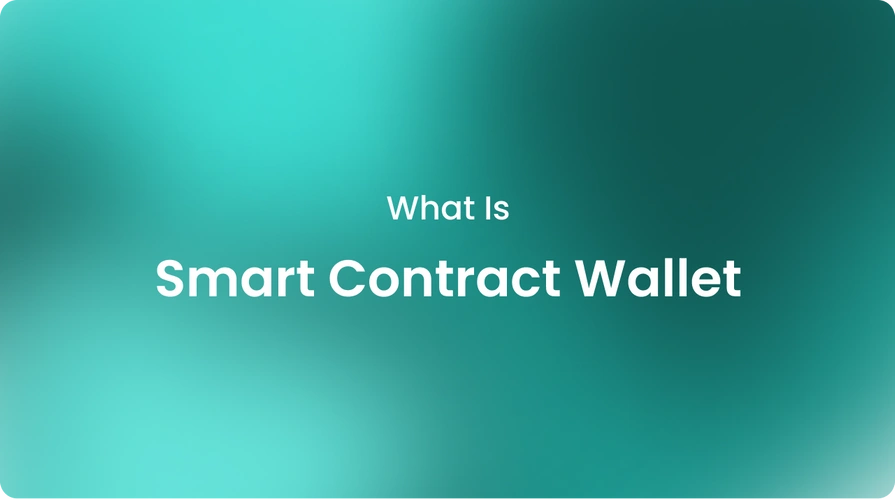|technology, knowledgehub
What Is Reentrancy Attack in Smart Contracts?

Whether securing personal finances or large-scale enterprise systems, security is always a top concern when transacting value through digital means. As blockchains and smart contracts have emerged as new technologies for value transfer, so too have novel opportunities for exploitation.
In this article, we'll explore one such vulnerability: the reentrancy attack in smart contracts. By understanding how they work at a technical level as well as prevention strategies for prevention, developers and users alike can help foster a more secure ecosystem for blockchain applications.
What is a reentrancy attack?
At its core, a reentrancy attack exploits weaknesses in a smart contract's ability to react to complex external interactions, such as calls to other contracts.
It works by recursively calling a function before the first call has completed, allowing the attacker to manipulate the contract state and potentially steal funds.
Let's explain: smart contracts, which are public codes deployed on a blockchain, have the ability to interact with external contracts, services, and accounts. While processing an initial call, the contract stays "open" to receive subsequent calls during these interactions.
Before the first call finishes, an attacker can call the same smart contract function multiple times, allowing them to drain assets or forge transactions before updating the final state. This reentry phenomenon gives the attack its name.
How does the reentrancy attack work?
As an example, imagine a simple smart contract that allows depositing and withdrawing funds. During a withdrawal, the contract first transfers the amount to the caller and then updates the user's balance. A reentrancy attack would call withdraw multiple times before the balance update finishes.
Each call sends funds to the attacker, draining more than the actual balance. Each call also prevents a balance update from occurring. Repeated calls allow for the quick siphoning of all funds from the contract.
The key factors that enable reentrancy attack in smart contacts are the external calls, mutable states, and a lack of blocking mechanisms in the contract's code. Attackers exploit these vulnerabilities by nesting calls.
What are the different types of reentrancy attacks?
There are a few main types of reentrancy attacks to be aware of in EVM contracts:
Balance draining
As our example showed, a malicious actor can reenter functions to repeatedly transfer funds from the target contract to themselves.
Value transfer redirection
By reentering a contract, an attacker may be able to redirect crypto tokens or values intended for one recipient to themselves instead.
State manipulation
By reentering a setter function before its completion, an attacker could manipulate contract state variables like addresses, sizes, permissions, etc. for unauthorized activities.
Denial of service
A resource-intensive reentry loop could potentially freeze a contract by exhausting its gas limit, blocking all future operations.
Reentrancy abuses the ability to reenter functions, slowly undermining a smart contract's security guarantees around ownership, permissions, and state over many transactions.
What is an example of a reentrancy attack in a smart contract?
One of the most infamous real-world examples of a reentrancy attack was the DAO hack of 2016. As the largest crowdfund of its time, the DAO smart contract held over $150 million worth of Ether. However, it contained a vulnerability that allowed for reentrant withdrawal patterns.
An anonymous hacker was able to exploit this by splitting their contribution into child DAOs, draining Ether recursively from the parent DAO into each new one.
Each withdrawal call reopened an entry back into the splitting function, repeating the process and compounding the amount withdrawn in each operation over and over. This reentrancy bug ultimately led to the theft of over 3.6 million Ethers.
This high-profile attack demonstrated both the extent of damage possible and the need for more rigorous smart contract security best practices to avoid such vulnerabilities during development.
It highlighted reentrancy attack in smart contracts as a top concern deserving special attention from both programmers and auditors.
What does a reentrancy guard do?
To prevent reentrancy attacks, developers can employ techniques like the "checks-effects-interactions" (CEI) pattern, which sequences operations safely.
A reentrancy guard, however, is another effective measure. This entails adding a boolean variable, such as 'locked', that tracks the execution status of functions.
By setting the guard to true before external calls within a function, then false after, it acts as a gatekeeper. Any intermediate reentry attempts will fail since reentry requires unlocking an already locked function. Therefore, a basic reentrancy guard could take the following form:
Lock entry with locked = true
Perform internal state transactions
Call external contract
Unlock with locked = false
End function
If executed correctly with all external calls sandwiched between lock/unlock steps, a reentrancy guard makes the "reentrant-call-reentrant-call" attack sequence impossible by design. This effective defensive pattern is now considered a common best practice for Ethereum smart contract development.
How do you protect smart contracts against a reentrancy attack?
To protect smart contracts and users from reentrancy vulnerabilities, developers should incorporate the following strategies:
- Implement reentrancy guards before any external calls, as outlined above.
- To safely sequence operations, follow the CEI pattern of checks before effects before interactions.
- Conduct comprehensive code security audits with organizations like Cryptobunq, which offers custody and wallet, crypto exchange API, crypto checkout and invoicing, batch crypto payments, and many more solutions with robust security.
- For mission-critical contracts, consider additional reviews from specialized firms.
- To reduce risk, keep dependencies simple and minimize external calls where possible.
- Monitor networks for suspected attacks, and upgrade contracts expeditiously if vulnerabilities are identified.
- Educate users on security best practices for managing keys and interacting with potentially at-risk contracts.
By deploying defensive measures at the code level as well as operating cautiously at network and user levels, the blockchain community can help strengthen collective security against financially devastating smart contract reentrancy attacks.
The bottom line
As blockchains and smart contracts continue to develop, so too must awareness of evolving technical vulnerabilities. The reentrancy attack demonstrates how even simple bugs can potentially have massive real-world impact, highlighting why security must remain top of mind for all participants.
By understanding reentrancy mechanics in depth, learning from past examples like the DAO, and properly utilizing tools like reentrancy guards, the community works to ensure user funds, sensitive data, and core applications remain protected.
With prudent precautions for reentrancy attack in smart contracts, the promises of blockchain technology can move forward in a safer, more trusted manner. To keep your transactions secure, you can use crypto services. Cryptobunq is a one-stop-shop crypto service provider in this regard.
For maximum security, you can easily integrate Cryptobunq's expert crypto solutions into your business. You can easily secure and manage your crypto assets with CBQ solutions. Check out our case studies first, and then contact us to take advantage of secure CBQ services!













